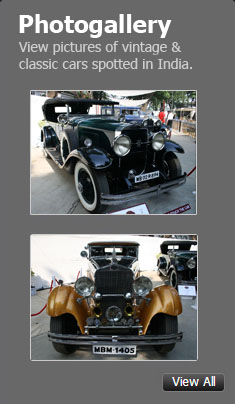News
2025 Skoda Kodiaq Review: Observations after a day of driving
In terms of cruisability, the Kodiaq can run at triple-digit speeds all day long effortlessly. The engine spins at a relaxed ~1,750 rpm at 100 km/h and ~2,000 rpm at 120 km/h.
Driving the Skoda Kodiaq 2.0L Turbo Petrol Automatic
2.0L TSI petrol engine produces 201 BHP and 320 Nm. It is mated to a 7-speed DSG transmission and an AWD system:

At least for now, this 1,984cc turbo petrol engine mated to the 7-speed DSG automatic transmission is the only powertrain on offer in the 2025 Kodiaq. The combination is shared with the Volkswagen Tiguan R-Line, which was launched recently. What’s noteworthy is that Skoda has made its powerplant E20-compatible, while the Tiguan R-Line’s engine does not.With 201 BHP & 320 Nm on tap, the engine is a strong performer. Torque is available from low revs, which makes the powerplant very tractable and enjoyable at all speeds. In the city, the engine's healthy bottom end helps you get around effortlessly. The throttle response is good, and there is no turbo lag. The engine never feels lethargic at low revs and there's always more than enough power on tap to accelerate or overtake quickly. In bumper-to-bumper traffic, just lift off the brake and the car can crawl forward at 8 km/h without any throttle input.
Drive with a light foot and the gearbox shifts up pretty quickly. It is eager to reach higher gears, and you will see it upshift under 2,000 rpm. You won't feel gearshifts, as the transition is very smooth. The Kodiaq's steering is light at city speeds, and the car doesn't feel as big as its dimensions suggest. All these traits, along with the sorted ergonomics and good all-around visibility, make the Kodiaq very easy to drive in the city.
Out on the highway is when things get even better. The Kodiaq is much more car-like to drive than body-on-frame SUVs. With the powerful and eager turbo petrol, you'll find yourself addicted to flooring the throttle whenever there's an empty stretch of road. Outright performance is very good and you’ll find yourself touching triple-digit speeds very quickly. The mid-range is strong, which makes overtaking very easy. The kickdown time in D mode isn’t the fastest, but it’s still quick. A faster response can be obtained in "Sport". With the accelerator floored, the engine revs to 6,000 rpm (start of the redline) before shifting up. We feel this rev limit is on the lower side for a petrol powerplant. What is great is that the engine sounds fantastic when revved hard.
In terms of cruisability, the Kodiaq can run at triple-digit speeds all day long effortlessly. The engine spins at a relaxed ~1,750 rpm at 100 km/h and ~2,000 rpm at 120 km/h. In summary, the 2.0 TSI is one of the most sorted motors out there. It feels comfortable at low & high revs and in the city as well as on the highway.
Like the outgoing car, the new Kodiaq uses a 7-speed DSG gearbox from the DQ381 family. Cruising around in D mode, one won't even notice the gears being shifted. They are damn smooth. The kickdown response time is quick and you will never feel that the gearbox is hunting for gears either. It's in the right ratio almost all the time. When you are in the mood to drive the car aggressively, engage 'Sport' mode. This puts the car in 'high alert' mode and its senses are heightened. The DSG holds onto gears longer before upshifting and you'll also notice that the gearbox is eager to downshift at the slightest of throttle inputs. People with a heavy right foot will love S mode for sure. However, in the city where the traffic is heavy, S mode can get jerky.
Paddle shifters have been provided. The response time is quick and they are fun to use on a twisty section of road. Tap the left paddle for a downshift and you'll notice the ECU blipping the throttle to match the revs, which is quite satisfying & addictive. There's a good amount of engine braking available as well.
The Kodiaq gets six driving modes to choose from – Eco, Normal, Sport, Offroad, Snow and Individual, which can be selected through the touchscreen. Each mode changes the engine's characteristics, gearbox shift points, air-con operation, steering weight etc.

- Normal Mode: This is the default mode. It provides a balance between fuel efficiency and performance.
- Eco mode: In this mode, the throttle response is duller. However, because the engine is powerful, Eco mode is still usable. The car doesn't feel sluggish and there is sufficient grunt on tap to keep you cruising at higher speeds. When it comes to quick overtaking, you will need Normal or Sport modes. In this mode, the climate control system doesn't work as hard as in the other modes. Still, it cools the cabin sufficiently.
- Sport mode: Engage Sport mode, the throttle response becomes sharper and the engine feels more responsive. The transmission holds on to gears longer and is eager to shift down at the press of the accelerator. This is the mode for when you want to have some fun, but for regular city driving, it can feel jerky.
- Individual mode: The driver can choose to adjust the individual parameters, such as the steering, air-conditioning, etc. according to his/her preferences.

- Offroad mode: This mode optimises the vehicle's systems for off-road driving. This mode is active up to 30 km/h and includes hill descent control.

- Snow: This should be engaged on icy or snow-covered roads. It provides better accelerator sensitivity in these conditions.
Unlike the outgoing car, the India-spec 2nd-gen Kodiaq does not get Dynamic Chassis Control. So, the suspension settings cannot be altered by the user.
The Kodiaq comes with a convenient 'auto hold' feature which owners will love in the city. While the vehicle is waiting at a traffic signal, the driver can lift his foot off the brake pedal and the vehicle will stay in place. No need to keep the brake pedal continuously pressed.
The Kodiaq comes with an all-wheel-drive system. Normally, power is sent to the front wheels only. If road conditions require more traction, it will send the necessary amount of torque to the rear wheels. While this system will work well in moderate conditions, do note that the Kodiaq is not a proper offroader like the Toyota Fortuner.
Noise, Vibration & Harshness (NVH)
As you would expect in a premium SUV like this, refinement levels are overall satisfactory. There is a slight body shake felt on start-up and shutdown. On idle, there is a slight buzz felt on the centre armrest. The engine idles softly and you'd barely notice it while driving around sedately. Revv the 2.0 TSI and a nice, sporty note is audible in the cabin. Wind noise is well controlled even when driving at triple-digit speeds.
Mileage & Fuel Economy
The Kodiaq 2.0 TSI engine with the DSG automatic has an ARAI rating of 14.86 km/l which is an increase of more than 2 km/l over the outgoing car. However, we would expect 10 km/l or less in the city, depending on traffic density. It must be remembered that turbo-petrol engines are sensitive to throttle input and if you drive it hard, the fuel gauge will drop much faster. The Kodiaq's fuel tank capacity is 62 litres - 4 litres more than the 1st-gen car.
Skoda has equipped the Kodiaq with an idling start-stop system, which should help the fuel economy. While this system works seamlessly, we found it a little too intrusive for our liking.
Bonnet gets insulation on the underside:

Column-mounted shift-by-wire gear selector needs you to twist the outer portion to engage D or R. P is engaged by pressing a button on the side of the stalk:

Engaged gear is displayed on the left dial of the virtual cockpit:

Idling start-stop system can be switched off through the touchscreen:

Suspension
Ride Comfort
The Kodiaq has a MacPherson strut suspension at the front and a multi-link setup at the rear. The overall ride quality is compliant. Low-speed comfort can be termed as good, but not great. There is an underlying firmness that is felt on sharp bumps & broken roads. The setup handles small potholes & irregularities nicely, although medium-sized bumps can be felt in the cabin. While first and second-row passengers will not really complain, those in the already uncomfortable third row will certainly find the ride quality poor.
On the open road, the Kodiaq rides flat. While most bumps and irregularities on the road are flattened nicely, larger bumps can be felt inside the cabin. The Kodiaq rides on the same tyre size as before - 235/55 R18.
Handling & Dynamics
As mentioned earlier, the monocoque-based Kodiaq is very car-like to drive, unlike body-on-frame SUVs. High-speed stability is excellent and the handling is sorted. The Hankook Ventus tyres provide sufficient grip which helps the Kodiaq to hold its line through curves. On twisty roads, the car won't feel unstable at any point in time. There is a little body roll, but it's nothing unsettling.
Steering
The Kodiaq comes with electric power steering which is very light to operate at slow and parking speeds. This makes the car easy to drive in the city. At highway speeds, the steering weighs up, but not as much as enthusiasts would like. While the steering is precise and direct, like most EPS units, the feedback isn't great.
Braking
The Kodiaq comes with disc brakes on all wheels. The stopping capability of the Kodiaq is excellent & confidence-inspiring. On hard braking, the vehicle comes to a standstill quickly and without any drama.
Continue reading the discussion on the Skoda Kodiaq on our forum.



















